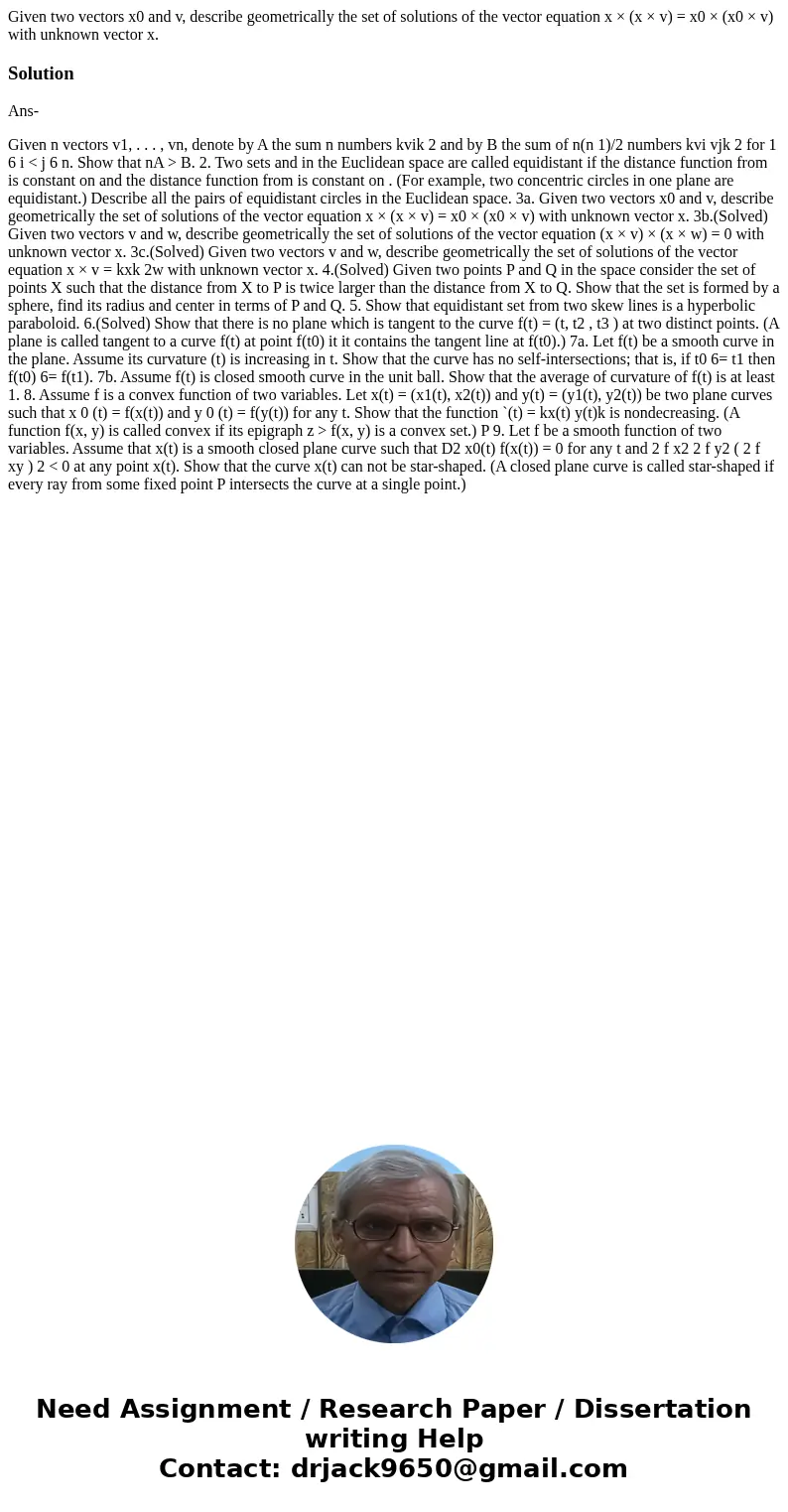Given two vectors x0 and v describe geometrically the set of
Given two vectors x0 and v, describe geometrically the set of solutions of the vector equation x × (x × v) = x0 × (x0 × v) with unknown vector x.
Solution
Ans-
Given n vectors v1, . . . , vn, denote by A the sum n numbers kvik 2 and by B the sum of n(n 1)/2 numbers kvi vjk 2 for 1 6 i < j 6 n. Show that nA > B. 2. Two sets and in the Euclidean space are called equidistant if the distance function from is constant on and the distance function from is constant on . (For example, two concentric circles in one plane are equidistant.) Describe all the pairs of equidistant circles in the Euclidean space. 3a. Given two vectors x0 and v, describe geometrically the set of solutions of the vector equation x × (x × v) = x0 × (x0 × v) with unknown vector x. 3b.(Solved) Given two vectors v and w, describe geometrically the set of solutions of the vector equation (x × v) × (x × w) = 0 with unknown vector x. 3c.(Solved) Given two vectors v and w, describe geometrically the set of solutions of the vector equation x × v = kxk 2w with unknown vector x. 4.(Solved) Given two points P and Q in the space consider the set of points X such that the distance from X to P is twice larger than the distance from X to Q. Show that the set is formed by a sphere, find its radius and center in terms of P and Q. 5. Show that equidistant set from two skew lines is a hyperbolic paraboloid. 6.(Solved) Show that there is no plane which is tangent to the curve f(t) = (t, t2 , t3 ) at two distinct points. (A plane is called tangent to a curve f(t) at point f(t0) it it contains the tangent line at f(t0).) 7a. Let f(t) be a smooth curve in the plane. Assume its curvature (t) is increasing in t. Show that the curve has no self-intersections; that is, if t0 6= t1 then f(t0) 6= f(t1). 7b. Assume f(t) is closed smooth curve in the unit ball. Show that the average of curvature of f(t) is at least 1. 8. Assume f is a convex function of two variables. Let x(t) = (x1(t), x2(t)) and y(t) = (y1(t), y2(t)) be two plane curves such that x 0 (t) = f(x(t)) and y 0 (t) = f(y(t)) for any t. Show that the function `(t) = kx(t) y(t)k is nondecreasing. (A function f(x, y) is called convex if its epigraph z > f(x, y) is a convex set.) P 9. Let f be a smooth function of two variables. Assume that x(t) is a smooth closed plane curve such that D2 x0(t) f(x(t)) = 0 for any t and 2 f x2 2 f y2 ( 2 f xy ) 2 < 0 at any point x(t). Show that the curve x(t) can not be star-shaped. (A closed plane curve is called star-shaped if every ray from some fixed point P intersects the curve at a single point.)

 Homework Sourse
Homework Sourse